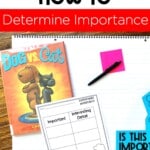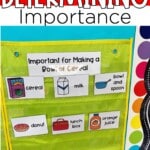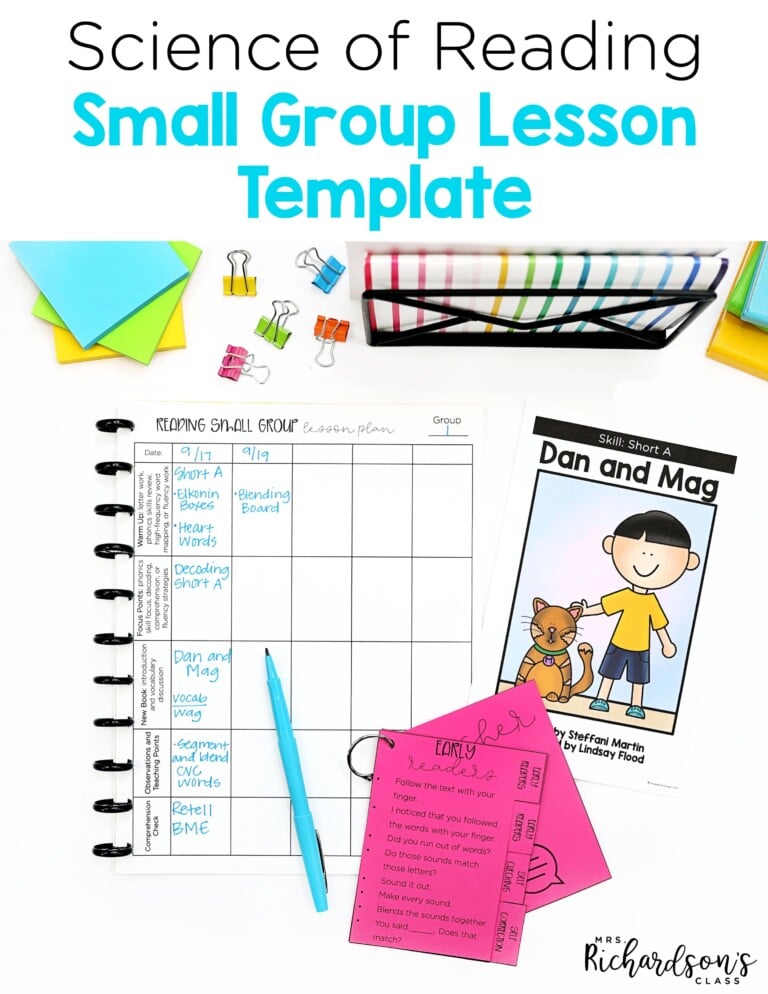

Use these activities and ideas to help your readers understand determining importance.
“No, we don’t need that,” is a phrase I found myself saying a lot to my kids when we leave the house. They are in a phase of wanting to take all their toys and things with us when we leave the house to go anywhere.
I’m totally fine with them taking a favorite stuffed animal or book with us to the grocery store, but we don’t need three lego men, the 2 inch thick book, a bucket, and baby doll, too. They aren’t important for going to the grocery store. There are things that I do need to take to the grocery store, however. I need my wallet, keys, and grocery list. Those are important to have with me.
Determining what is important to take with us in life is a skill we use all the time. We also have to determine what is important when we read. What do we need to hold on to as we read this book? What is important to remember after we finish this story? Let’s talk about how to teach determining importance today!
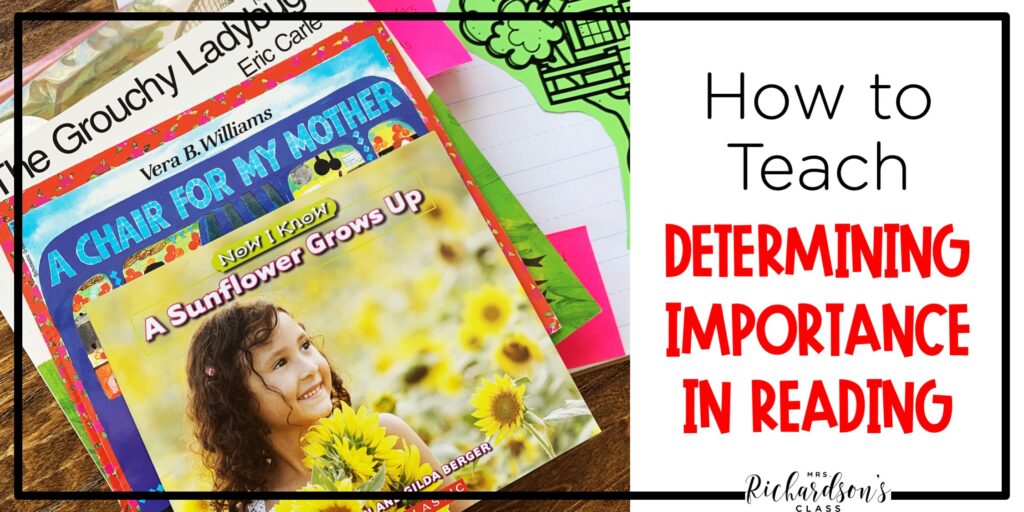
My daughter wants to bring lots of her toys to the store when we leave, but we can’t bring them all. There isn’t enough space, and they aren’t important to where we are going. Just like there isn’t enough space for my daughter to bring all her toys, students can’t remember every detail from a story they are reading. They have to be able to determine what the important parts are and remember those parts.
We teach students to determine importance because we want them to develop a deep meaning of the text. We want them to understand what they are reading.
Simply put, determining importance is when readers read a text and sort through information to figure out what is important and what is just an interesting detail. As they do this, they are monitoring their own thinking about the text. The more they think about what they are reading, the more they will comprehend.
First, start by grabbing students’ attention with an introduction. One way to introduce determining importance is to tell students you are going for a sleepover tonight at your sister’s house, and you still need to pack your bag.
You might say, “My sister and I have already planned that we are going to watch a movie and make cookies. I won’t need a toy.” Then, continue to ask students for ideas of things you will need at your sister’s house and things you can leave at home. You can talk through other similar examples with your students, too. I’ve found that introducing it in a fun way makes it not seem as big and daunting for students to try in a text later.
Another way to teach determining importance is to teach students to pay attention to the characters, setting, problem, and solution in a fiction story. These parts are the foundation of the story and the most important parts to remember. The whole story revolves around the characters and what is happening to them.
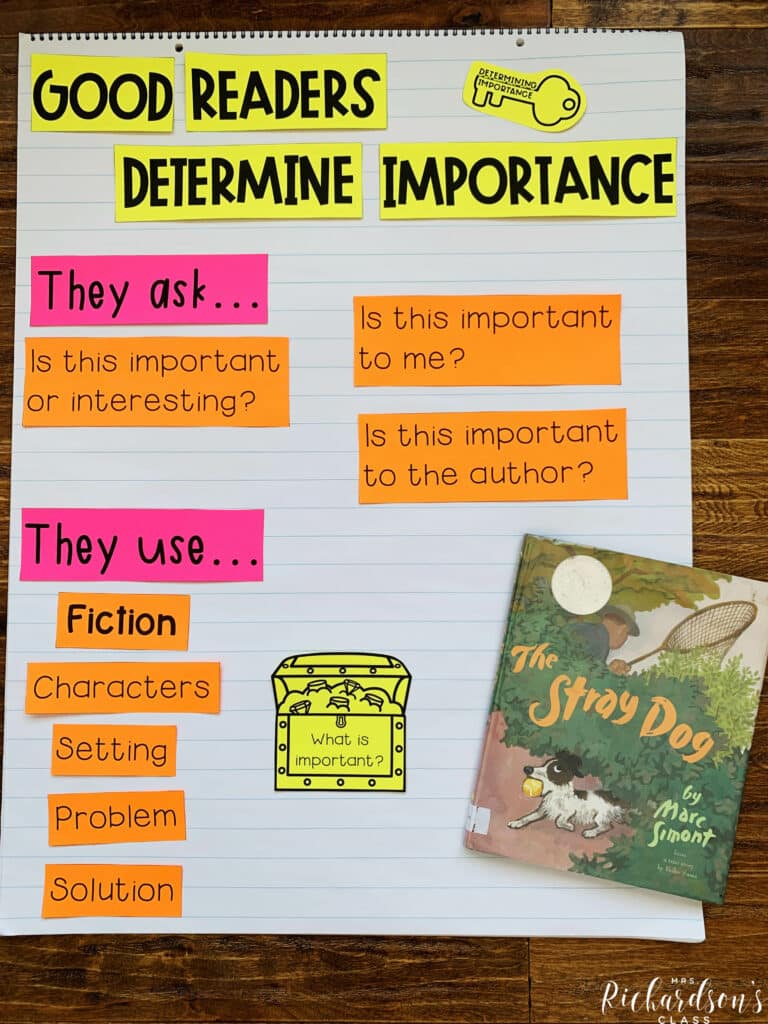
To help students practice determining importance, put a sticky note on the front of the book you are reading and label it with C, S, P, and S for characters, setting, problem, and solution. Then, jot down those parts of the story once you find them while reading.
In nonfiction, we don’t have characters, a setting, a problem, and a solution. We have a topic and details, or information that supports the topic. First, you have to find the topic of the book. I always taught my students that in nonfiction, the topic is usually related to the title of the book.
After you find the topic, ask students to think about the important details that are teaching you about that topic. You could read a few pages with your students and write down facts from the book. Then you could sort them on a tree anchor chart. The more important they are, the higher they go on the tree.
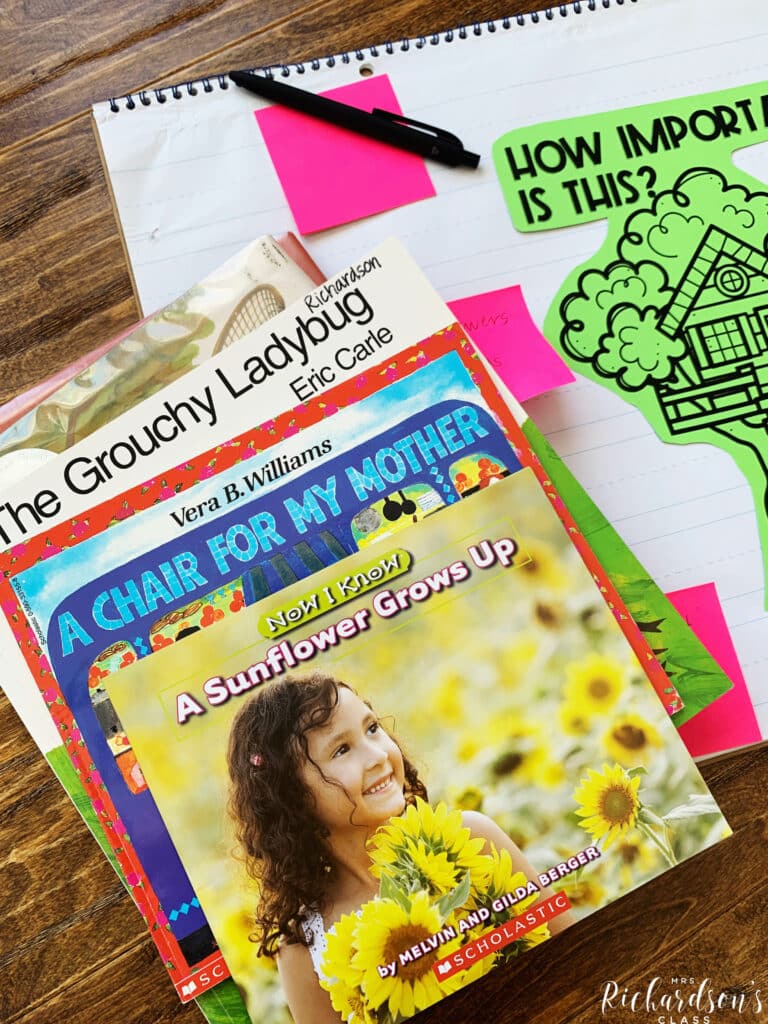
There are lots of good fiction and nonfiction books to use to help you teach this skill! One of my favorites is The Grouchy Ladybug by Eric Carle. Here are some other good books to use to teach determining importance:
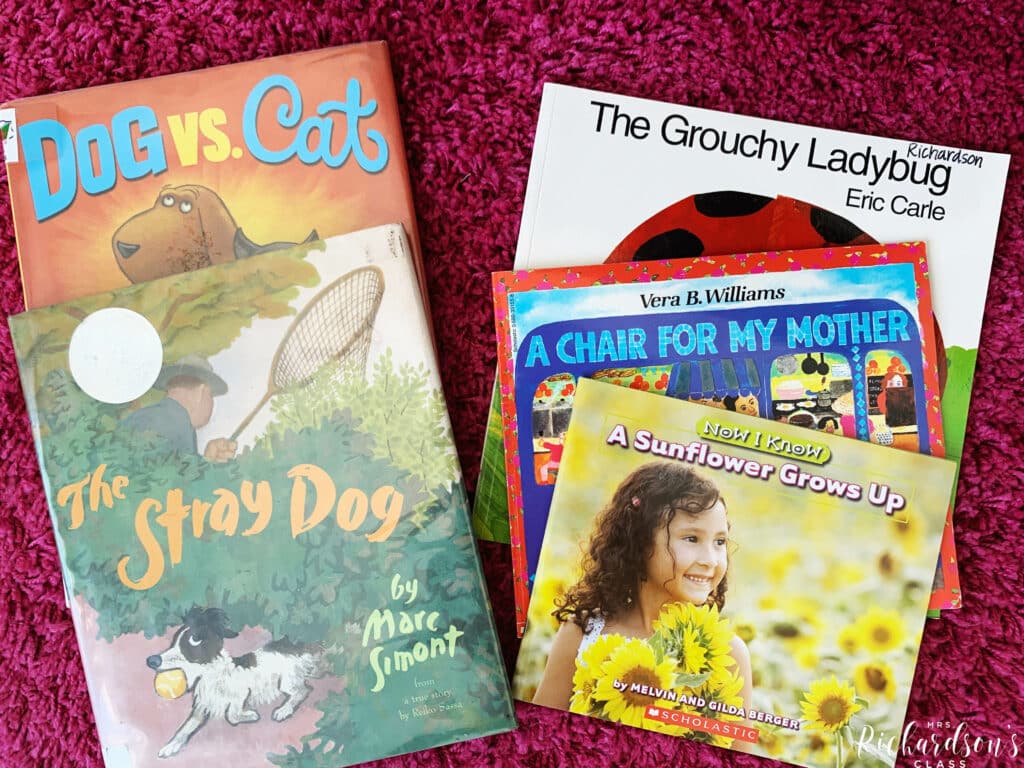
Not sure how to teach determining importance to your class? Need lesson plans to help you teach this skill? We can help you! We have a bundle of interactive read aloud lesson plans that focus on how to teach these important skills:
These units all have detailed, scripted lesson plans with a teaching schedule, anchor charts, a reader’s strategy tool, and digital components for distance learning. You can save a ton by grabbing the bundle. Come check it out HERE!
Do you want to make the most of your interactive read alouds, but find yourself struggling to find books, write lessons, and come up with activities? Do you want to teach your readers to think deeply about the text and develop strong reading strategies and skills?
If so, I’d love to introduce you to The Read Aloud Library! If you want 20 interactive read aloud lessons and activities delivered to you each month, you’ll want to check out The Read Aloud Library.
With your membership, each month you’ll receive:
Click HERE to learn more about The Read Aloud Library and join hundreds of other teachers!

Want to use the latest research to boost your readers during small groups? This FREE guide is packed with engaging ideas to help them grow!

I’m a K-1 teacher who is passionate about making lessons your students love and that are easy to implement for teachers. Helping teachers like you navigate their way through their literacy block brings me great joy. I am a lifelong learner who loves staying on top of current literacy learning and practices. Here, you’ll find the tools you need to move your K-2 students forward!


| Cookie | Duration | Description |
|---|---|---|
| cookielawinfo-checkbox-analytics | 11 months | This cookie is set by GDPR Cookie Consent plugin. The cookie is used to store the user consent for the cookies in the category "Analytics". |
| cookielawinfo-checkbox-functional | 11 months | The cookie is set by GDPR cookie consent to record the user consent for the cookies in the category "Functional". |
| cookielawinfo-checkbox-necessary | 11 months | This cookie is set by GDPR Cookie Consent plugin. The cookies is used to store the user consent for the cookies in the category "Necessary". |
| cookielawinfo-checkbox-others | 11 months | This cookie is set by GDPR Cookie Consent plugin. The cookie is used to store the user consent for the cookies in the category "Other. |
| cookielawinfo-checkbox-performance | 11 months | This cookie is set by GDPR Cookie Consent plugin. The cookie is used to store the user consent for the cookies in the category "Performance". |
| viewed_cookie_policy | 11 months | The cookie is set by the GDPR Cookie Consent plugin and is used to store whether or not user has consented to the use of cookies. It does not store any personal data. |

